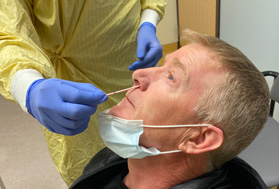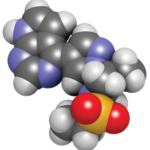 Note: This article was updated July 21 to add recommendations on restarting biologics following COVID-19.
Note: This article was updated July 21 to add recommendations on restarting biologics following COVID-19.
On April 29, the ACR released Guidance for the Management of Adult Patients with Rheumatic Disease During the COVID‐19 Pandemic and later updated the guidance for publication in Arthritis & Rheumatology. The recommendations address various treatment options and provide general guidance, as well as direction for when to start, stop or reduce medications. All recommendations are based on current knowledge and will be revised as circumstances and evidence evolve.
Methods
The ACR COVID-19 Clinical Guidance Task Force, including 10 rheumatologists and four infectious disease specialists, convened on March 26. Clinical questions were collated, and an evidence report was generated and disseminated to the panel. Questions and draft statements were reviewed and assessed using a well-established method of consensus building (i.e., modified Delphi process). This included two rounds of asynchronous anonymous voting by email and two webinars including the entire panel. Panel members voted on agreement with draft statements using a numeric scoring system, and consensus was determined to be low (L), moderate (M) or high (H), based on the dispersion in voting results. To be approved as guidance, median votes were required to correlate to predefined levels of agreement (with median values interpreted as agreement, uncertainty or disagreement) with either moderate or high levels of consensus.
The Recommendations
General statements for patients with rheumatic disease:
- The risk of poor outcomes from COVID-19 appears to be related primarily to general risk factors, such as age and comorbidity (H).
- Patients should be counseled on general preventive measures (e.g., social distancing and hand hygiene) (H).
- As part of a shared decision-making process between patients and rheumatology providers, select measures to reduce healthcare encounters and potential exposure to SARS-CoV-2 (beyond general preventive measures) may be reasonable (e.g., reduced frequency of lab monitoring, optimal use of telehealth, increased dosing intervals between intravenous medications) (M/H).
- If indicated, glucocorticoids should be used at the lowest dose possible to control rheumatic disease, regardless of exposure or infection status (M/H).
Glucocorticoids should not be abruptly stopped, regardless of exposure or infection status (H). - If indicated, angiotensin-converting enzyme (ACE) inhibitors or angiotensin receptor blockers (ARBs) should be continued in full doses or initiated (M/H).
For ongoing treatment of stable patients in the absence of infection or SARS-CoV-2 exposure:
- Hydroxychloroquine or chloroquine, sulfasalazine, methotrexate, leflunomide, immunosuppressants (e.g., tacrolimus, cyclosporine, mycophenolate mofetil, azathioprine), biologics, Janus kinase (JAK) inhibitors and non-steroidal anti-inflammatory drugs (NSAIDs) may be continued (this recommendation includes patients with giant cell arteritis who have been prescribed interleukin [IL] 6 inhibitors) (M/H).
- Denosumab may still be given, extending dosing intervals to no longer than every eight months, if necessary to minimize healthcare encounters (M).
- For patients with a history of vital organ-threatening rheumatic disease, immunosuppressants should not be dose reduced (M).
In patients with systemic lupus erythematosus (SLE):
- In newly diagnosed disease, hydroxychloroquine or chloroquine should be started at full dose, when available (H).
- In pregnant women with SLE, hydroxychloroquine or chloroquine should be continued at the same dose, when available (H).
- If indicated, belimumab may be initiated (M).
For patients with newly diagnosed or active rheumatic diseases in the absence of infection or SARS-CoV-2 exposure:



